Lost in the labyrinthine halls of Blue Prince, the Billiard Room holds a secret: a dartboard puzzle that’s not about throwing darts, but cracking a code of colors and numbers-where every ring is a clue, and every color is a key to unlocking hidden treasures.
Here’s how to solve the Billiard Room dart puzzle in Blue Prince.
How to solve the darts puzzle in the Billiards Room
To solve the darts puzzle in the Billiards Room in Blue Prince, start by understanding that each colored segment on the dartboard corresponds to a specific mathematical operation: blue means addition, yellow (or orange) means subtraction, pink means multiplication, and purple means division. Unlike typical math rules, you perform the operations starting from the ring closest to the bullseye and move outward, ignoring the usual PEMDAS order. For example, if the innermost ring is blue 13, followed by yellow 3, pink 5, and purple 10, you calculate step-by-step as 13 + 3 = 16, then multiply by 5 to get 80, and finally divide by 10 to get 8. Additional symbols like squares or diamonds can modify these steps by squaring results or swapping digits. Using a magnifying glass found elsewhere in the game helps reveal these rules, making the puzzle manageable and rewarding with keys and upgrades once solved.
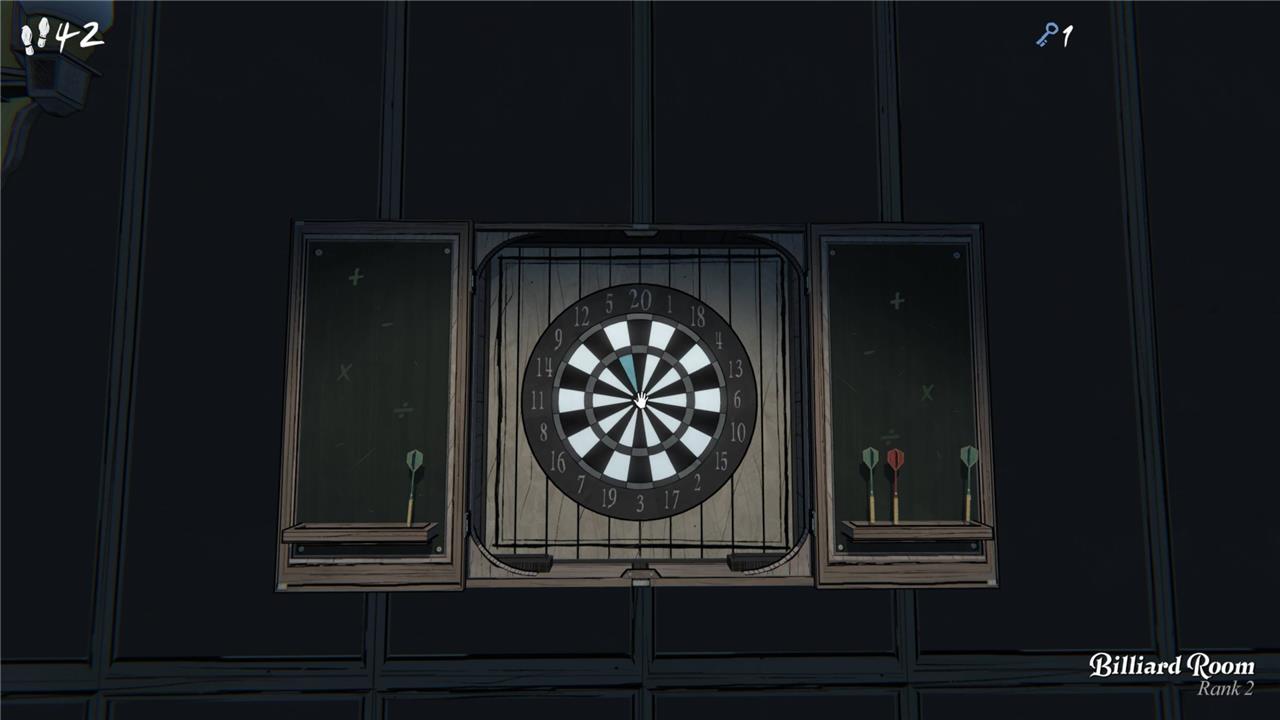
Every time you draft the Billiard Room, you’ll be able to access the darts puzzle. As with every good dive, it’s located on the far wall behind the pool table.
At its core, the darts puzzle is a series of randomized mathematical equations. Each color represents a mathematical function to its corresponding number on the darts board. You can find what function each color represents by using the magnifying glass on a document in the Nook, which reveals the following:
- Blue = addition
- Yellow = subtraction
- Pink = multiplication
- Purple = division
Note that PEMDAS – the parentheses, exponents, multiplication, division, addition, subtraction order of operations – doesn’t apply here. Rather, the order of operations for each darts puzzle equation starts from the ring closest to the bullseye and moves its way outward.
Also in our testing, at least in the early goings, the first equation consists of just one blue number. Since X number 0 = X number, select the number that’s highlighted in blue and you’ll move on to the second equation. At that point, though, you have to actually do some math.
Let’s go through a full series of examples for the darts puzzle:
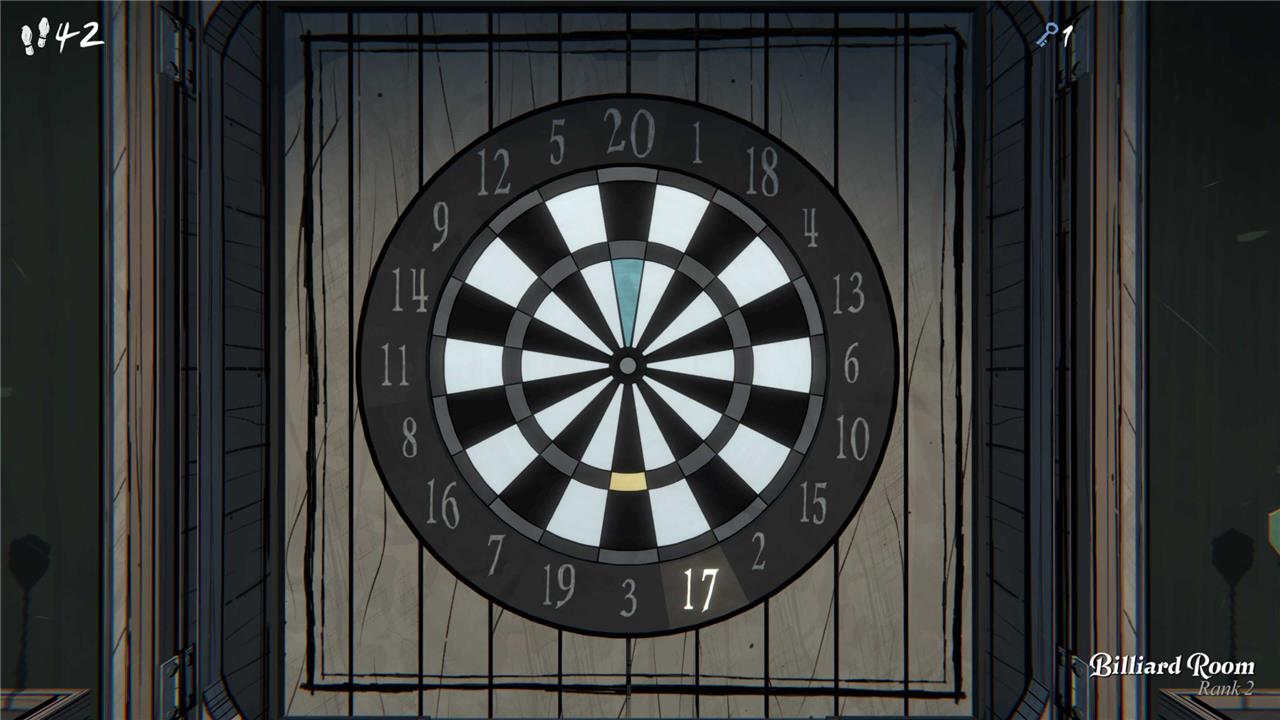
For this one, 20 is marked blue and 3 is marked yellow.
20 – 3 = 17.
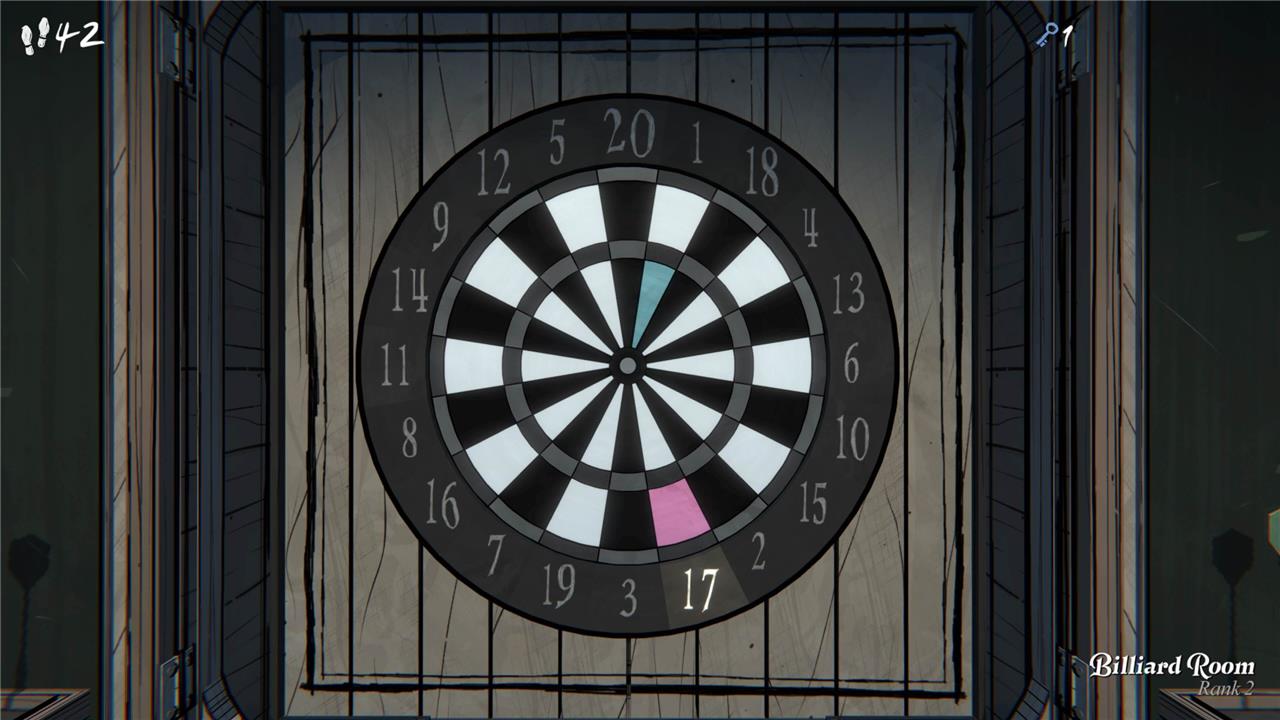
In this one, 1 is blue and 17 is pink.
1 x 17 = 17 (again!)
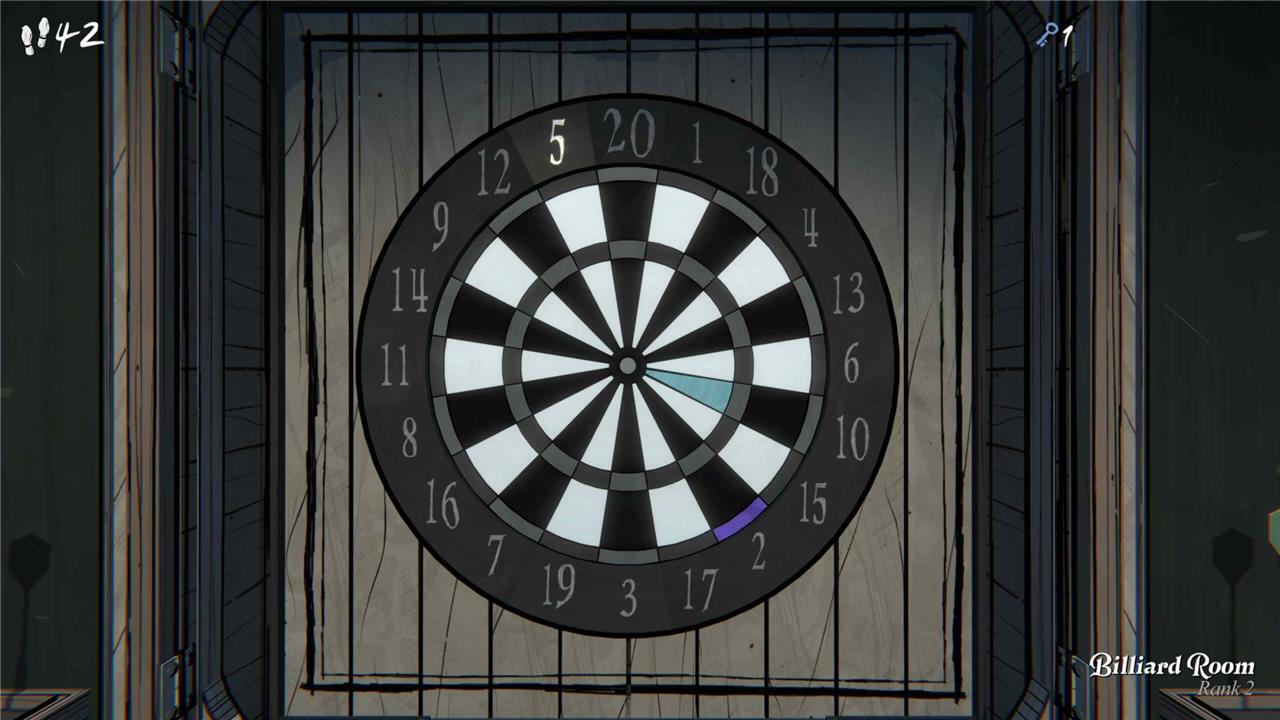
In this one, 10 is blue and 2 is purple. Since 2 / 10 doesn’t divide into a number that exists on a dartboard.
10 / 2 = 5.
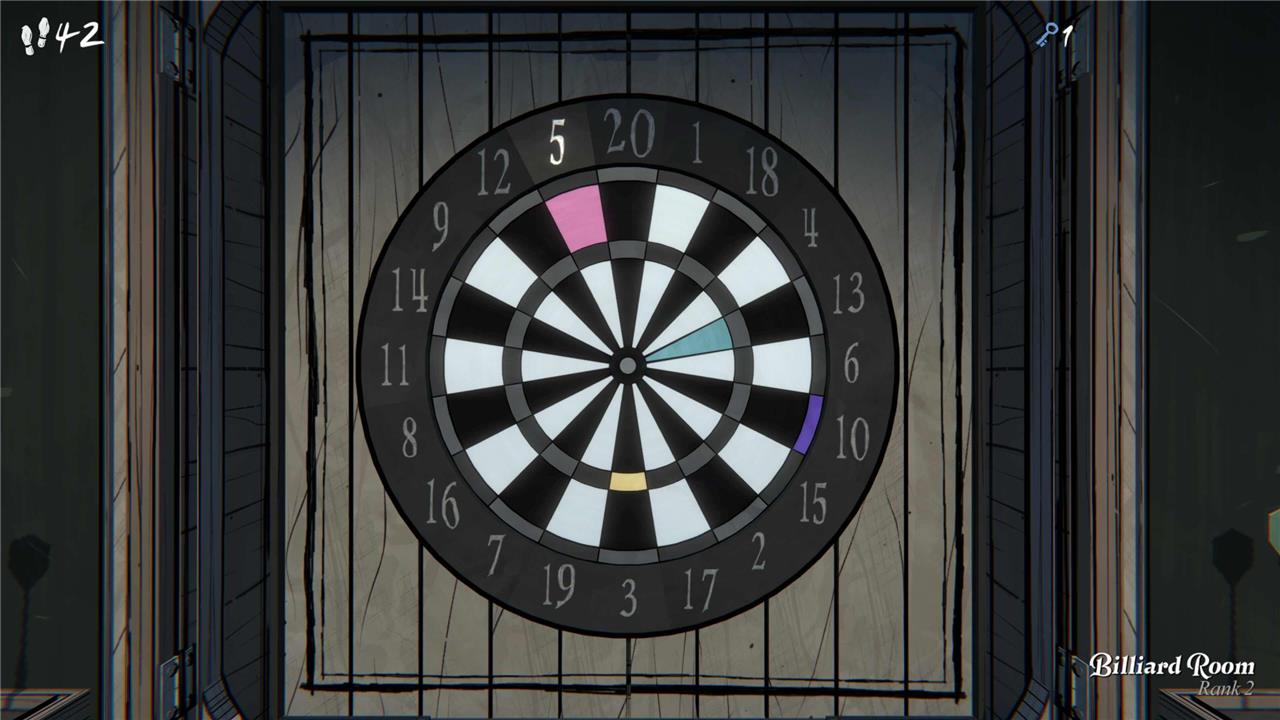
Here’s where it gets more complicated. Remember the rule about the order of operations? In this case, the blue 13 is your base number, then the yellow 3, the pink 5, and the purple 10. Breaking it down.
13 – 3 = 10
10 x 5 = 50
50 / 10 = 5
Dart puzzle rewards
Solving the Billiard Room dart puzzle in Blue Prince rewards players with various keys that are essential for progressing through locked doors in the game. These rewards can include multiple normal keys or rare keys such as the Silver Key, Keycard, Secret Garden Key, and the Prismatic Key. Each successful completion of the puzzle not only grants these valuable items but also unlocks more challenging puzzles on subsequent visits, making it a worthwhile endeavor for players seeking to advance and explore new areas within the manor.
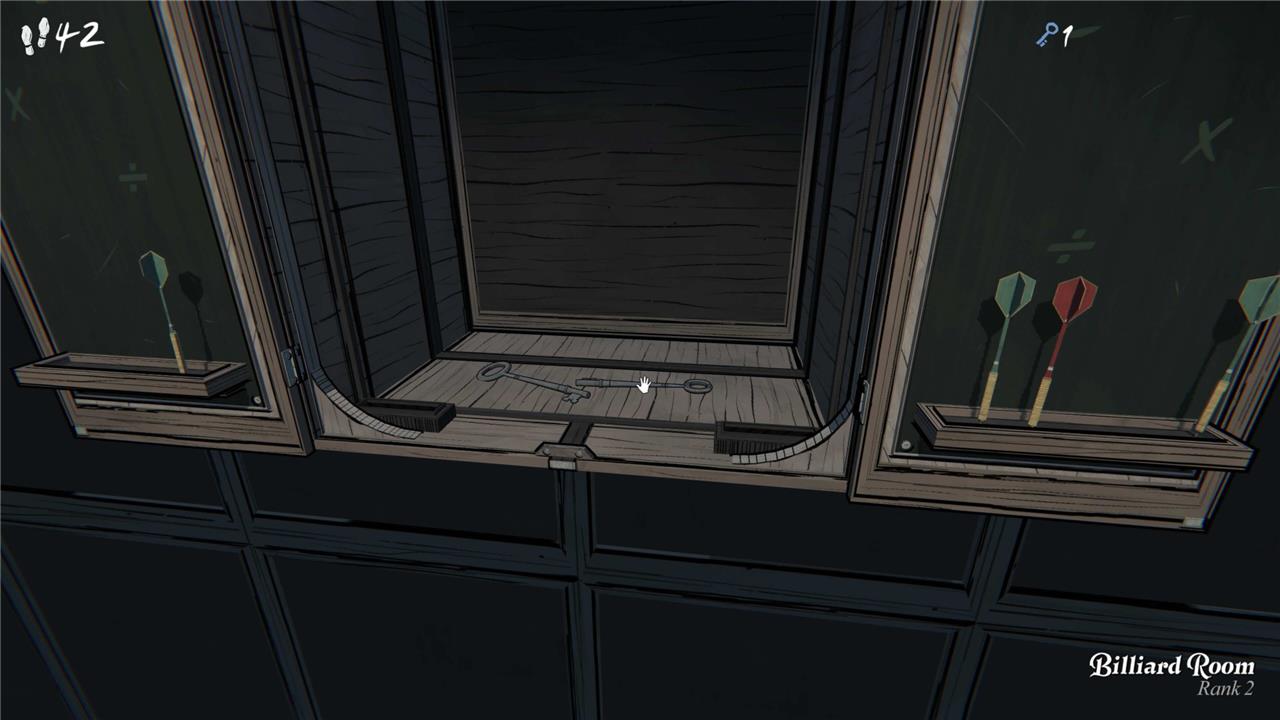
Once you solve the final puzzle, the dartboard will shift upward, revealing your reward of either keys, a silver key (which leads to rooms with multiple doorways), a Secret Garden Key, or an electronic keycard (which unlocks electronically locked doors).
Advanced darts puzzle symbols
As you progress in the Billiard Room dart puzzle in Blue Prince, you’ll encounter advanced symbols that add new layers of complexity beyond the basic color-coded math operations. In addition to blue (addition), yellow or orange (subtraction), pink (multiplication), and purple (division), later puzzles introduce special symbols in the bullseye and on the board. These include squares, which require you to square the result after a step; diamonds, which invert the digits of a result; red dots, which mean you must repeat a step multiple times; red Xs to skip a step; red slashes to halve the result; and squiggly lines to round numbers to the nearest 1, 10, or 100. Sometimes, only a third of a segment is colored, indicating you should divide that number by three. These symbols can be stacked or combined, and their effects apply to specific steps based on color or position, always following the unique rule of working from the center of the dartboard outward, rather than traditional math order of operations.
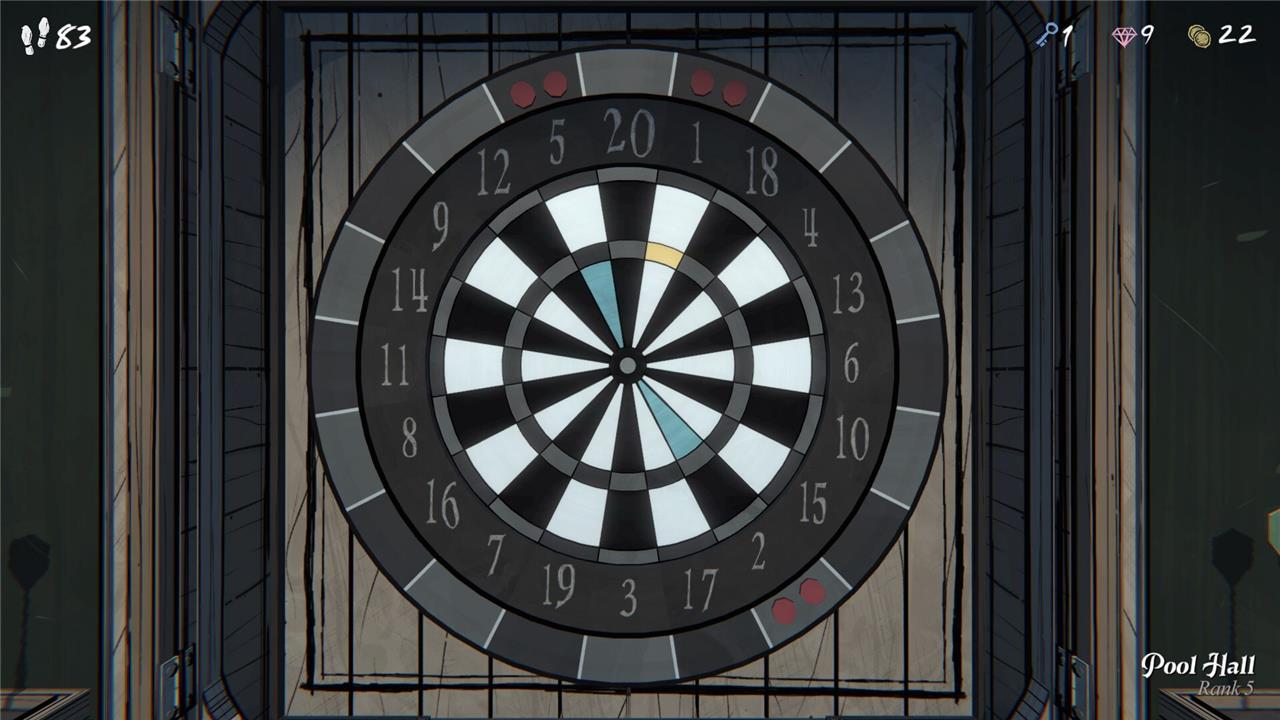
According to our testing, the more times you complete the darts puzzle, the more complicated each equation gets – even folding in some newer, more flummoxing math symbols.
Here are some additional symbols – set in either the bullseye or order border of the dartboard – we’ve encountered alongside brief definitions of what they mean. You’ll apply these symbols after doing whatever steps correspond with the color of the bullseye.
- Square = 2
- Diamond = reverse the numbers
- Red dots = repeat this step based on how many dots are displayed
- Red X = skip this step
- Red / = slash your final number in half
- Two squiggly lines = round (up or down) to the nearest 1
- Four squiggly lines = round to the nearest 10
- Six squiggly lines = round to the nearest 100
- The section of the dartboard is 1/3 full = divide that number by 3
As one AELGAMES staffer put it in our Slack channel, “there was a time when i liked the billiards room puzzle but now that i am on day 50 or so, i hate the billiards room puzzle.”
What is the key trick to solving the Billiard Room dart puzzle quickly
The key trick to solving the Billiard Room dart puzzle quickly in Blue Prince is to always read the puzzle from the bullseye outward, and perform each operation in sequence as dictated by the color of each ring-not by standard mathematical order of operations.
Core Steps for Speed:
-
Start at the center (bullseye) and work outwards.
-
Use the color code:
-
Blue = Addition
-
Yellow = Subtraction
-
Pink = Multiplication
-
Purple = Division
-
-
Apply each operation in order as you move outward, regardless of normal PEMDAS rules.
-
Watch for special symbols (square, diamond, dots, X, slash, wavy lines) that modify the result at that step.
By following this strict sequence and color code, you’ll solve the puzzle efficiently every time.
How does following the inside-out order simplify solving the puzzle
Following the inside-out order-starting from the bullseye and working outward through each colored ring-simplifies solving the Billiard Room dart puzzle because it gives you a clear, step-by-step procedure that removes ambiguity about which operation to apply next. This approach is similar to how building a puzzle from the inside out can help you focus on the core elements before expanding outward, rather than getting distracted by the edges or trying to apply standard mathematical rules that may not fit the puzzle’s unique logic.
By processing each layer in sequence, you avoid confusion from the usual order of operations (PEMDAS/BODMAS), which might otherwise lead you to prioritize multiplication or division before addition or subtraction regardless of the puzzle’s intended flow. In this puzzle, each ring’s color directly tells you which operation to use at that step, and moving inside-out ensures you don’t skip or misapply any of these steps. This structured method makes the solution process both faster and less prone to error.
